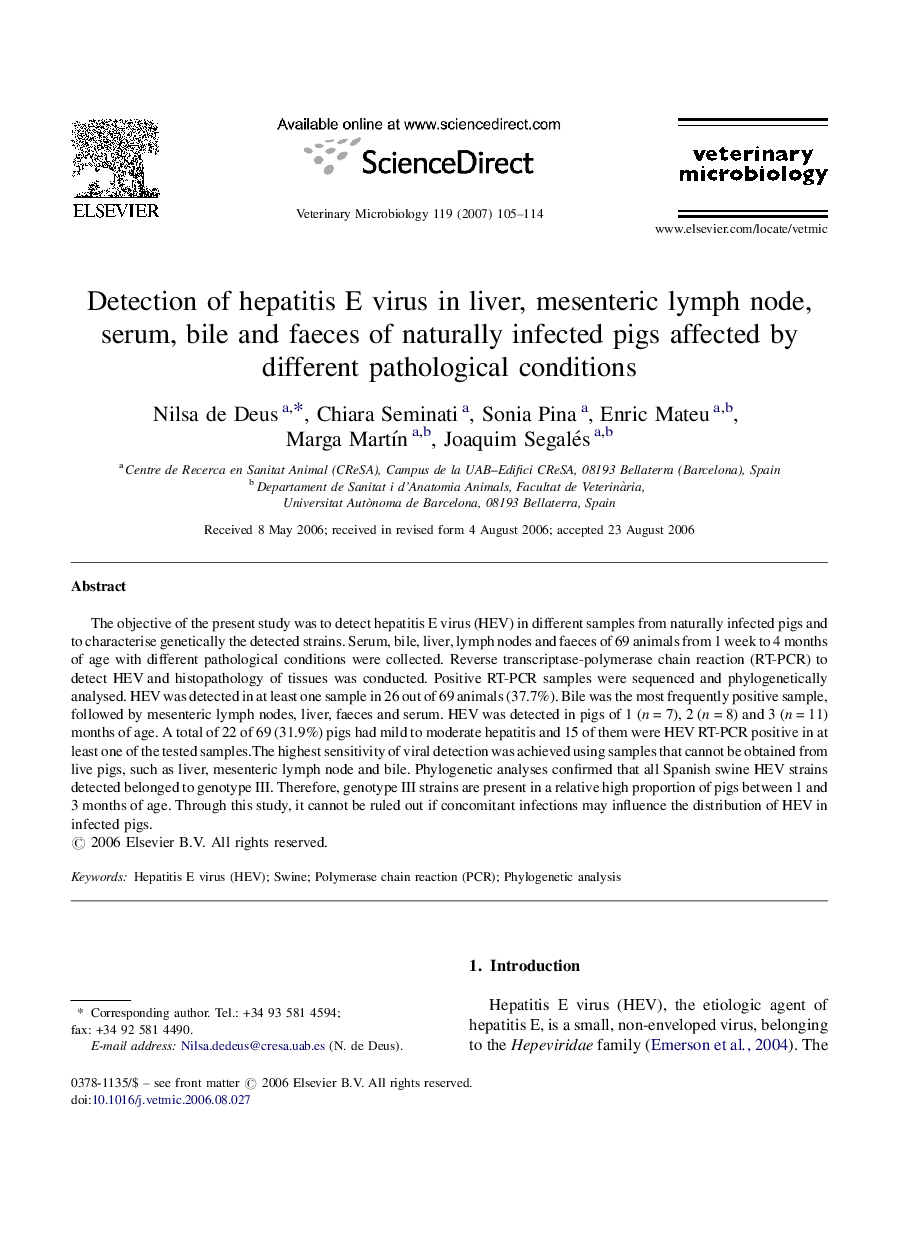| کد مقاله | کد نشریه | سال انتشار | مقاله انگلیسی | نسخه تمام متن |
|---|---|---|---|---|
| 2469397 | 1555457 | 2007 | 10 صفحه PDF | دانلود رایگان |

The objective of the present study was to detect hepatitis E virus (HEV) in different samples from naturally infected pigs and to characterise genetically the detected strains. Serum, bile, liver, lymph nodes and faeces of 69 animals from 1 week to 4 months of age with different pathological conditions were collected. Reverse transcriptase-polymerase chain reaction (RT-PCR) to detect HEV and histopathology of tissues was conducted. Positive RT-PCR samples were sequenced and phylogenetically analysed. HEV was detected in at least one sample in 26 out of 69 animals (37.7%). Bile was the most frequently positive sample, followed by mesenteric lymph nodes, liver, faeces and serum. HEV was detected in pigs of 1 (n = 7), 2 (n = 8) and 3 (n = 11) months of age. A total of 22 of 69 (31.9%) pigs had mild to moderate hepatitis and 15 of them were HEV RT-PCR positive in at least one of the tested samples.The highest sensitivity of viral detection was achieved using samples that cannot be obtained from live pigs, such as liver, mesenteric lymph node and bile. Phylogenetic analyses confirmed that all Spanish swine HEV strains detected belonged to genotype III. Therefore, genotype III strains are present in a relative high proportion of pigs between 1 and 3 months of age. Through this study, it cannot be ruled out if concomitant infections may influence the distribution of HEV in infected pigs.
Journal: Veterinary Microbiology - Volume 119, Issues 2–4, 31 January 2007, Pages 105–114